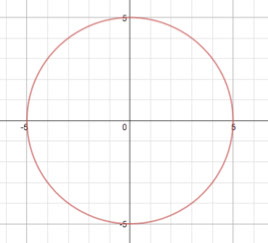Home
Episode 1 Supports
Episode Description
Making Sense: Sasha and Keoni grapple with how to represent a general point on the parabola and how to express different distances involving that point.
Students’ Conceptual Challenges
Students might struggle to represent the distances from a point on the parabola where the y-value is general.
- After struggling to label the distance from the point to the directrix, Sasha and Keoni examine their methods [see 3:01 – 4:08] to solve for the x-value of a point on the parabola when the y –value was 5, 7, and 10 to support finding a generalization. Sasha and Keoni continue to struggle with generalizing the distances in this episode.
- After struggling to label the distance from the point to the directrix, Sasha and Keoni examine their methods [see 3:01 – 4:08] to solve for the x-value of a point on the parabola when the y –value was 5, 7, and 10 to support finding a generalization. Sasha and Keoni continue to struggle with generalizing the distances in this episode.
Focus Questions
For use in a classroom, pause the video and ask these questions:
1. [Pause video at 4:08]. Keoni said it will always be y +1. What is y plus 1? Where does the one come from?
2. [Pause video at 6:03]. Keoni drew a horizontal line. What is true about every point on that line?
3. [Pause the video at 8:35]. What have Sasha and Keoni figured out so far?
Supporting Dialogue
Focus students’ attention on measurable distances and their representations by asking:
- Where are y, y + 1, 1, and y – 1? Come up to the board and point to these distances.
- Does anybody else see these distances represented in another place on the graph? Show us on the graph where you see them. How do you know that the distances are the same?
- Where are y, y + 1, 1, and y – 1? Come up to the board and point to these distances.
Math Extensions
Consider the circle below.
1. Find the x-value of points on the circle for x-values of 3, 4, and 2.
Find an equation for the x-value of a point on the circle for a general y-value. Summarize your methods.

Mathematics in this Lesson
Lesson Description
Targeted Understanding
CC Math Standards
CC Math Practices
Lesson Description
Keoni and Sasha create a general method for representing the x-value for any point on a particular parabola, given the y-value of that point. By using their previous results, along with the Pythagorean theorem, they are able to determine the equation for the parabola.
Targeted Understandings
This lesson can help students:
- Interpret the meaning and use of an equation that they derive to relate the x-value to the y-value for a general point on a given parabola (x = √(4y)).
- Conceive of algebraic symbols, such as x and y, as quantities that have infinitely many possible values and that vary together, rather than only as unknowns that have a single numerical value.
- Express important quantities, such as the distance between a general point on a given parabola and its directrix, by generalizing one’s reasoning from Lesson 2, when students determined the x-value for different points on the parabola when y was 5, 7 and 10.
Common Core Math Standards
• CCSS.M.HSG.GPE.A.2: Derive the equation of a parabola given a focus and directrix.
Sasha and Keoni use the definition of a parabola, along with the Pythagorean theorem, to derive the equation of a given parabola in Lesson 3. They express it in a form that is useful for locating the x-value for any point on the parabola given its y-value (namely, x = √(4y)). In Lesson 4, they re-express and derive the equation as y = x2/4 . Later, they generalize their reasoning to derive the equation for any parabola with vertex (0,0) in Lesson 5 and any parabola with vertex (h,k) in Lesson 9.
• CCSS.M.HSA.SSE.A.1.B. Interpret complicated expressions by viewing one or more of their parts as a single entity. Sasha and Keoni express the distance from a general point (x,y) on a particular parabola to its directrix (y = –1) as y + 1. They conceive of this distance as a single entity, which they locate on the graph. They are also able to describe and locate the distances represented by parts of the expression: y and 1. Similarly they interpret the expression y – 1 both as an entity and in terms of the distances represented by each of its parts.
Common Core Math Practices
CCSS.Math.Practice.MP2 Reason abstractly and quantitatively.
According to the Common Core’s description of Math Practice 2, mathematically proficient students are able to “decontextualize—to abstract a given situation and …manipulate the representing symbols as if they have a life of their own” and to “contextualize, to pause as needed during the manipulation process in order to probe into the referents for the symbols involved.” Sasha and Keoni use the Pythagorean theorem to set up the equation for a given parabola as (y–1)2 + x2 = (y–1)2 and then reason abstractly by performing appropriate algebraic transformations to arrive at the equation x = √(4y). However, they also reason quantitatively by describing the distances represented by each term in both equations: y–1, x, y+1, y, and √4y. They also discuss what the equation x = √(4y) means and how it is useful.















